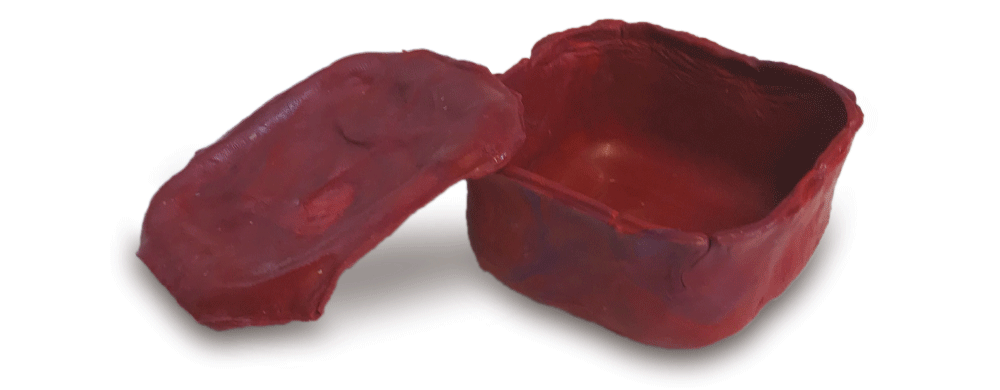material re:think
In circular economy process we have a wider industry circular process to deal with waste and material recovery, all generate energy use and substantial infrastructure.
Short-cycling can help prolong material use by allowing the consumer to reuse or recycle materials and goods at a local level over the wider national recover waste streams. Thermoplastics or other mailable and reusable materials could play a role in keeping materials at the highest level in the material life-cycle and change behaviours to waste.
Thermoplastics: Plant based mouldable bioplastics could be a way to allow consumers to extend material use and move away from the single use problem. Reusable materials could help establish closed looped material pathways. (Material: PLA corn based polymer. Mailable point 60°. (ThermoWorx - suppliers of mailable polymer. WWW.thermoworx.com)
Moulds 1.0: (Above) Using hot water this thermoplastic material softens to allow moulding by hand. Purple, yellow and red moulds. Moulds 2.0: (Right above) A mix of the original sample moulds.
Waste 1.0: (Above) The first batch of waste from Mould 2.0, note the inclusion of trimming waste. Mould 3.0: (Above right) Mould 3.0 is a mix of the waste from Mould 2.0, note the colour change.
Waste 2.0: (Above) Waste from Mould 3.0. Mould 4.0: (Above right) Mould 4.0 is made from Mould 3.0, note the colours beginning to blend to one.
Mould 5.0: Mould 5.0 is made from Mould 4.0, note the colour change to one colour. This experiment clear indicates reusable materials
Short-cycle: Establishing short-cycling methodologies and processes for consumers to adapt new behaviours towards material resource and value.






